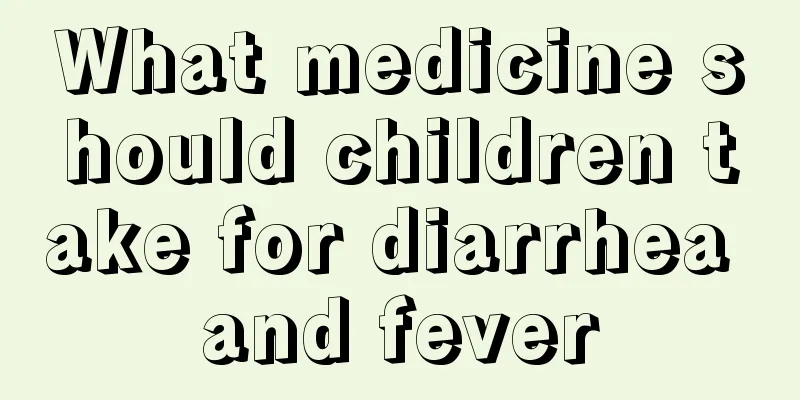What medicine should children take for diarrhea and fever

|
Diarrhea is a very common disease. After the onset of the disease, the patient may experience vomiting, fever, abdominal distension, sticky stools, and even bloody stools. In addition, if the diarrhea continues for a long time, the body will also show symptoms of dehydration. In severe cases, the patient will continue to feel nausea and vomiting, and will be particularly uncomfortable. In fact, children can be treated with these methods after they have a fever and diarrhea. 1. General treatment: Rest in bed as much as possible and take glucose-electrolyte solution orally to replenish fluid loss. If obvious dehydration occurs, intravenous supplementation of 5%-10% glucose saline and other relevant electrolytes is required. Encourage a light liquid or semi-liquid diet to prevent dehydration or treat mild dehydration. 2. Symptomatic treatment: Take or inject antipyretics if necessary. Such as ibuprofen, aspirin, etc. 3. Antimicrobial treatment: The therapeutic effect of antibiotics on this disease is controversial. For infectious diarrhea, targeted antibiotics such as berberine, gentamicin, etc. can be appropriately selected. However, the abuse of antibiotics should be prevented. What to do with diarrhea and fever in adults: Dietary treatment 1. Reduce the intake of fat and crude fiber foods, as these foods can stimulate intestinal peristalsis and aggravate diarrhea. If someone is intolerant to milk, they should temporarily avoid consuming milk and its products. 2. Supplement the intake of high-protein and high-calorie foods. Patients often suffer from insufficient protein and calorie intake due to diarrhea, so they should increase the intake of high-protein and high-calorie foods to improve nutritional status, but do not consume too much, otherwise it will increase the burden on the gastrointestinal tract. 3. Foods with little residue often lack vitamins, especially vitamin C. You can choose some vegetable soup, fruit juice, tomato juice, etc. to prevent diarrhea accompanied by bleeding and strengthen tissue repair. 4. Taboo foods: such as coarse grains, raw and cold fruits and vegetables, cold mixed vegetables, etc., leeks, celery, pickled mustard tubers, etc. that are rich in crude fiber; hard and indigestible meats such as ham, sausage, bacon, etc.; irritating foods such as peppers, spirits, mustard, chili powder, as well as high-fat foods such as fatty meats and puff pastries. |
<<: The child fell and hit his head on the ground and got a bump
>>: Seven-month-old baby's head is always sweating
Recommend
What should I do if my baby’s thigh root is broken?
Before infants and young children learn any langu...
What should I do if my baby has a high fever and his temperature is sometimes high and sometimes low?
Babies often get sick due to their low immunity. ...
What to do if children have food accumulation and fever? Chinese medicine treatment is effective
Many new mothers always feel that their babies ar...
The dangers of precocious puberty in children
Children's height development is related to h...
What should I do if my child has a fever and sore throat?
Many people have sore throats due to minor illnes...
Is it better for girls to develop early or late?
In recent years, precocious puberty and early dev...
Causes of indigestion in babies
Baby indigestion is a common disease in life, esp...
What happens if the child doesn't want to eat?
Whether a child’s diet is normal is directly rela...
What should I do if my child keeps complaining about eye pain?
Children's eyes are watery, especially clear ...
The hard lump on the child's arm after vaccination
Children usually need to get vaccinations due to ...
What should I do if a little girl has dandruff?
Women all love beauty very much, and since enteri...
What to do if an eight-month-old baby has a fever and diarrhea
An eight-month-old baby is at the best time to pl...
The best age to treat children's body odor, parents should know this knowledge
If body odor occurs in childhood, it is mostly ca...
Baby belly button sticker
Baby umbilical cord stickers are very practical f...
Newborn Baby Eats Mommy Love
We all know that children's affairs are what ...









